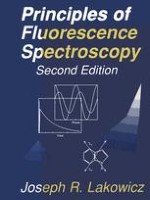1999 | Buch | 2. Auflage
Über dieses Buch
`In the second edition of Principles I have attempted to maintain the emphasis on basics, while updating the examples to include more recent results from the literature. There is a new chapter providing an overview of extrinisic fluorophores. The discussion of timeresolved measurements has been expanded to two chapters. Quenching has also been expanded in two chapters. Energy transfer and anisotropy have each been expanded to three chapters. There is also a new chapter on fluorescence sensing. To enhance the usefulness of this book as a textbook, most chapters are followed by a set of problems. Sections which describe advanced topics are indicated as such, to allow these sections to be skipped in an introduction course. Glossaries are provided for commonly used acronyms and mathematical symbols. For those wanting additional informtion, the final appendix contains a list of recommended books which expand on various specialized topics.'
from the author's Preface
Anzeige
